Travel ideas. Japan
Japan is perhaps the most mysterious country I have visited. Going on a trip, I could not imagine anything from what was in my head about Japan from the school curriculum. This country bypassed me and if any other I could associate with the events, cuisine, traditions, common phrases, such as Italy – pizza, Spain – bullfighting, France – perfume and fashion, something about Japan is quite evident in the imagination did not appear. Perhaps I could only say that this is a country of electronics and the Japanese cities of Hiroshima and Nagasaki suffered from the explosion of an atomic bomb dropped by the Americans.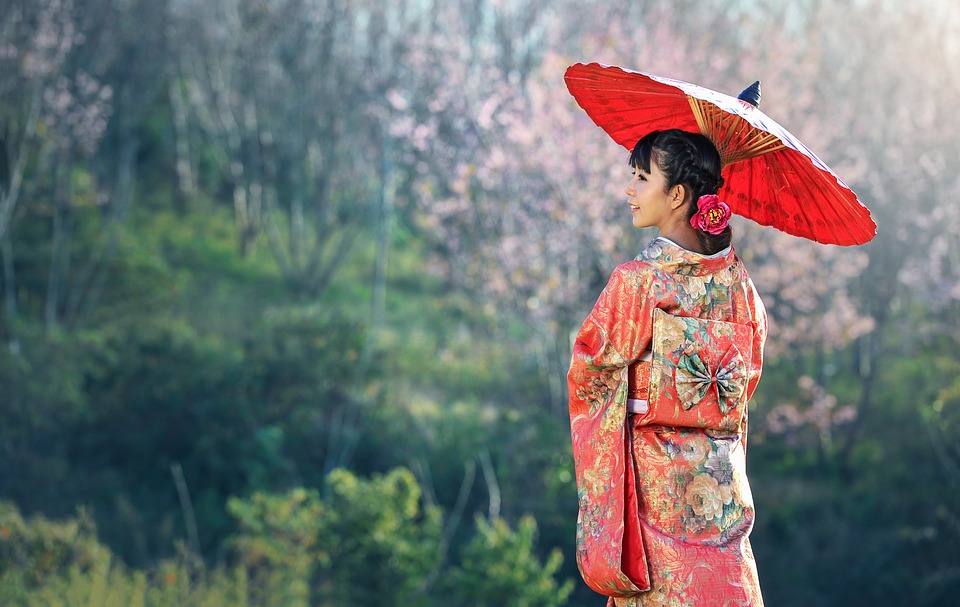
So what is the country of Japan, what are its culture, customs, traditions, people and exciting events? Above all, it is worth saying that millions of tourists from all over the World annually visit Japan and discover its inhabitants and culture – so unusual, unique and original that there is a desire to come here repeatedly for the next portion of impressions. First, from its formation to the present day, Japan is an Empire whose reins of power have been passed from Emperor to Emperor and have never been interrupted.
Japan occupies the several thousands of Islands in the Pacific Ocean. Instead, it can even say that the four significant Islands — Honshu, Kyushu, Hokkaido, and Shikoku — make up 97% of the total area of The Japanese archipelago and the most populated. The population was 126 million people in 2017. Moreover, the capital of Tokyo, which includes several prefectures inhabited by more than 30 million people, which is an absolute record Worldwide.
Dai Nippon Taikoku, or The Great Japanese Empire, was the name of modern Japan before World War II. Officially, in Japan, the country is called Nippon koku, and the Japanese call the country Nippon.
History
The first signs of a settlement of The Japanese archipelago appeared about 40 Millennium BC.
For most of its history, the ancient descendants of the Japanese were no different. They sowed rice, fished, engaged in weaving and pottery, mined ore and hunted. Many crafts brought to Japan by its neighbors Korea and China. Japan of that time consisted of a large number of principalities, which often waged internecine war. It was the neighbors of Japan that influenced the development of the country in the form of a centralized state, the creation of the first laws and the flourishing of Japanese culture.
For centuries, neighboring countries have influenced the development of Japan; it is the flourishing of relations and the exchange of technology, the discord and the struggle for territory, as evidenced by repeated attacks on Japan by the Mongol, Chinese or Korean States-principalities or retaliatory land grabs.
Since the 16th century, the period begins when Europeans, Americans, and Russians reach the shores of Japan and, in one way or another; there is the establishment of trade relations and the termination of Japan's isolation from the rest of the world. Western countries gave Japan technology and firearms. During the same period, Japan is almost wholly united into a single state.
Finally, centralized Japanese state appears under the control of Emperor Meiji. He took as a basis the political, judicial and military systems of Western countries. The Constitution, the Parliament, and the Council were created. The Japanese Empire is becoming a world industrial power. This rapid growth of the economy, industry and the army allowed dictating the conditions to neighboring countries and winning wars with China and Russia at the turn of the 20th century. Japan has also annexed Korea and Taiwan.
Further, the period of militarism and expansion continues: Japan participates in the First World War on the side of the Entente, yet more consolidating its political influence and territory, occupying Manchuria. In 1936, Japan signed a Pact with Nazi Germany, and in 1941 joined the aggressors on the side of Germany and Italy.
From 1936 to 1945, Japan starts several wars with China, joins Hong Kong and the Philippines. Japan declares war on the US and the UK by attacking Cape Pearl Harbor. This policy ends with the complete defeat of Japan in the fight after American pilots bombed the cities of Hiroshima and Nagasaki in 1945. On September 2, 1945, Japan signed the act of unconditional surrender aboard the American battleship Missouri, under which many countries gained sovereignty, and Japan lost part of its lands and Islands.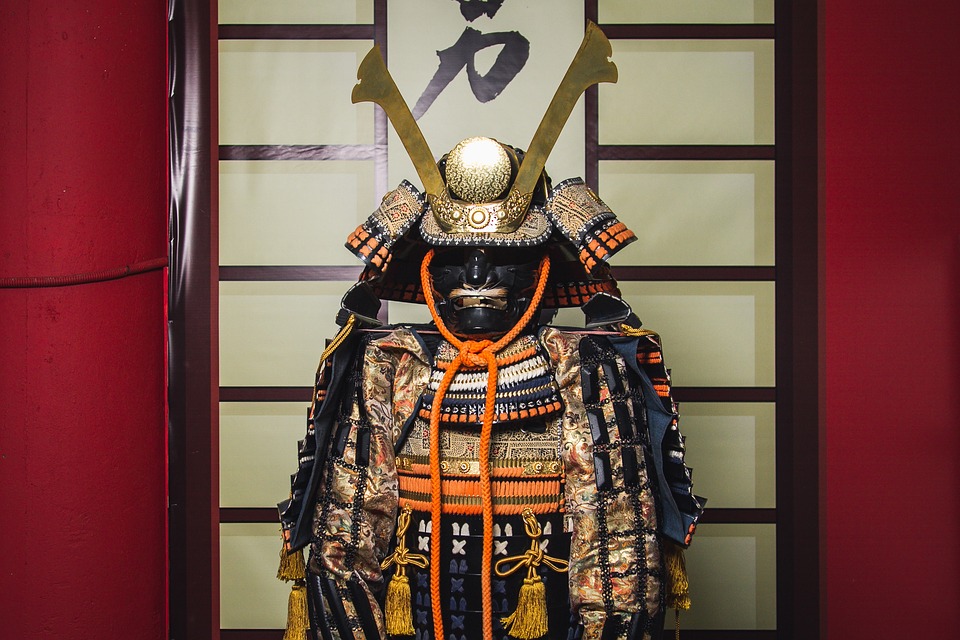
The 50s of the 20th century for Japan are held under the flag of economic recovery and the country after the consequences of the Second World War. For more than 40 years in a row, the Japanese economy has set records for economic growth, the benefits of which the Japanese can reap now.
Now, Japan is the third country in the World concerning GDP. Japan is the fourth exporter and sixth importer in the World. Today, it is a highly developed country with a relatively high standard of living. The Japanese are very modest and self-sufficient people. Their houses are small, close to each other; vegetation in the cities is a little. Small and narrow streets are similar to each other. Japan is distinguished by unusual purity and quality of roads. Railways of all levels cut the entire territory of large cities along and across. All pedestrian roads in the towns are equipped with lanes for the visually impaired, and in the metro at the approach to the escalators switched on birdsong.
Landmarks
Most of the Islands of The Japanese archipelago are volcanic. The largest and most famous of them is Mount Fuji, which is revered by the Japanese as a Shrine. What will be attractive to tourists in Japan are the Imperial palaces, national parks, and temples, futuristic buildings in the center of megacities, which are a vast number, but if you are the first time in Japan, it is best to start exploring the Central cities of Tokyo and Kyoto. All major Islands have a network of Shinkansen high-speed Railways, which allows reaching the most remote areas in a couple of hours.
The Island of Honshu. Tokyo. The Imperial Palace in Tokyo
The Imperial Castle is one of the main attractions of Tokyo. The path to the Palace runs through various government departments and ministries. A massive fortress wall surrounds the Palace itself, but now on the territory of the Palace lies a modern road.
The Imperial Palace is a small building in Japanese style. Around the Palace, there are massive fortifications and moats with water. On the territory of the Palace is a beautiful landscape. The Emperor of Japan lives here. Passage to the castle is not allowed except for two dates a year – on the New Year and the birthday of the Emperor – visitors are permitted in the courtyard.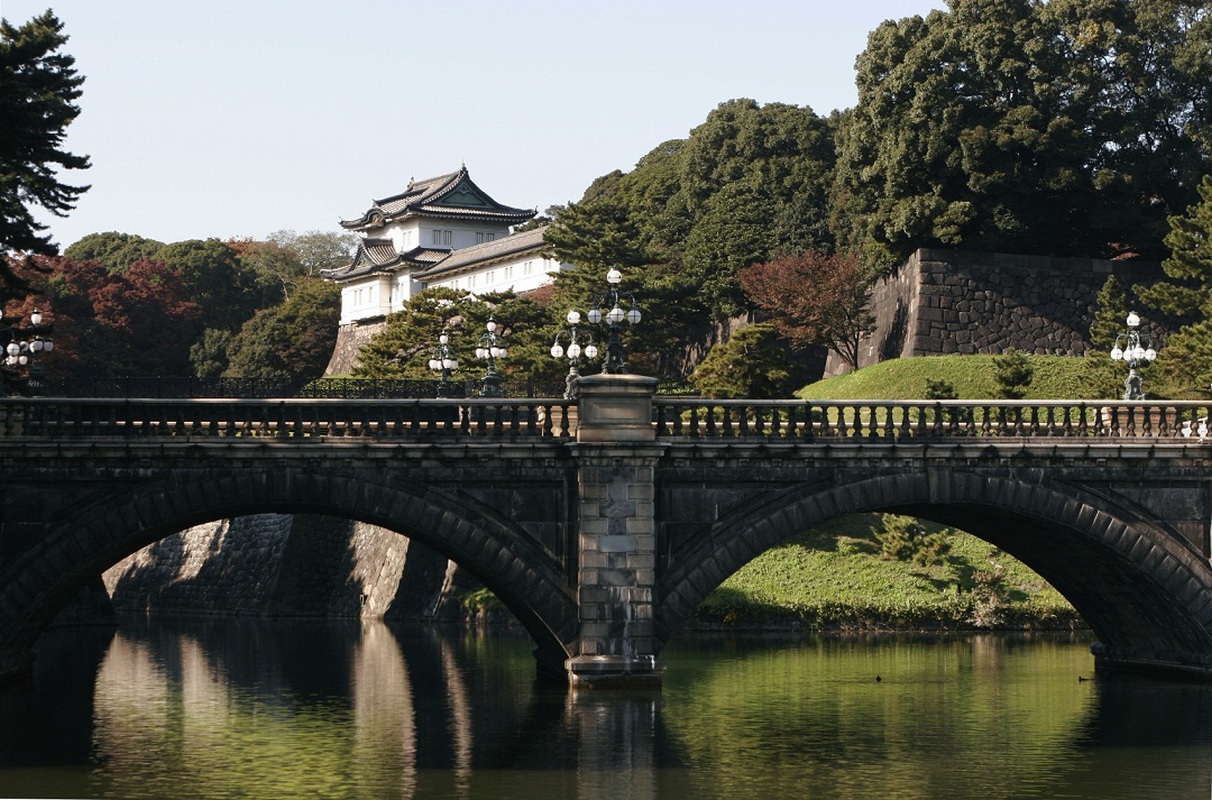
Shinjuku Imperial Park
This Park is located in the heart of Tokyo, and a considerable number of plants and trees grow on its 53 hectares, including several thousand fragrant cherries, which in the spring amaze tourists with their flowering. The locals stay here for the night to wake up into the beautiful aromas of Sakura and birds singing.
Tokyo Sky Tree
This is the name of the Japanese TV tower, which is the second tallest building in the world. The tower surprises and amazes with its size from the outside, and inside, rising about two-thirds of its height, a fascinating view of Tokyo is opening. The capital of Japan is so great that even from this height its borders are not seen. The height of the Sky Tree tower is 634 meters.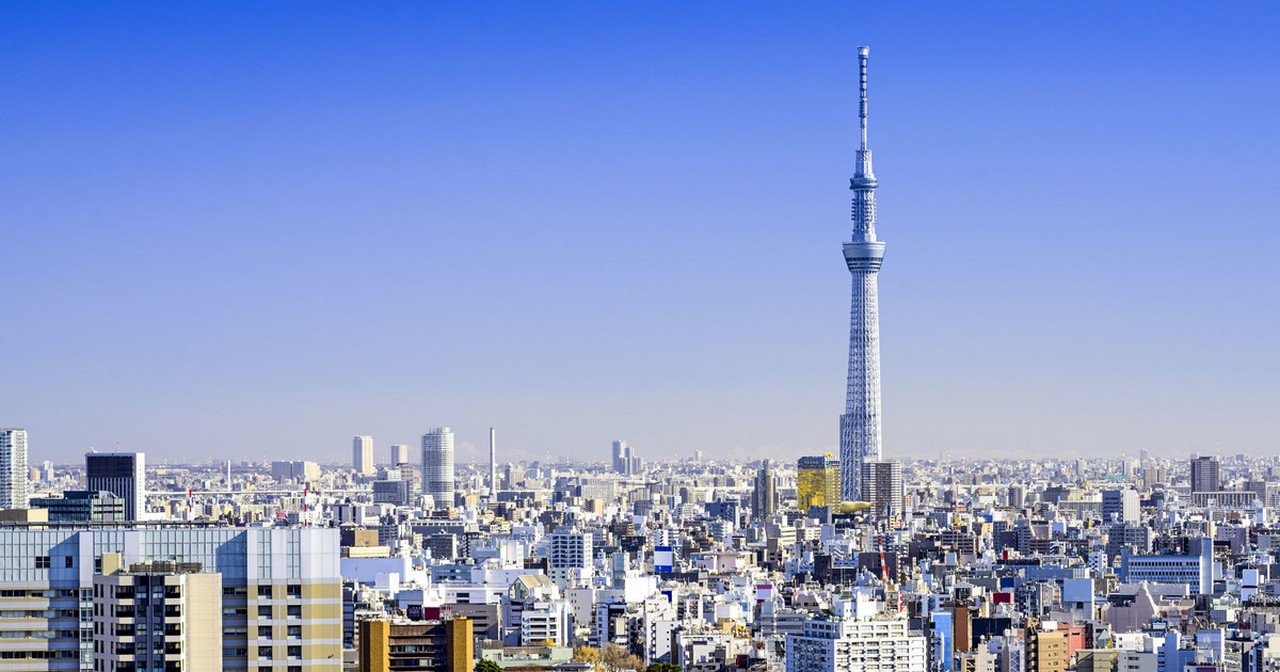
Tsukiji fish market in Tokyo
Tokyo market can be classified as the attraction for the variety of fresh fish, shellfish and spices to them. Already one is just like to take a look here at the strange fish will bring you many bright emotions. Early in the morning, there is a tuna auction. There are many cafes in the market area where you can enjoy fresh sushi.
The Asakusa district in Tokyo
Asakusa is one of the most remarkable areas of Tokyo. Most of the Shinto temples are preserved here, as the city was least affected by the bombing during the war. The largest and most famous temple of Asakusa is Senso-JI. Here you can also take a boat ride on the rivers of Tokyo. Crowds of tourists are attracted by the representation of geisha in Asakusa, where many of their houses are concentrated.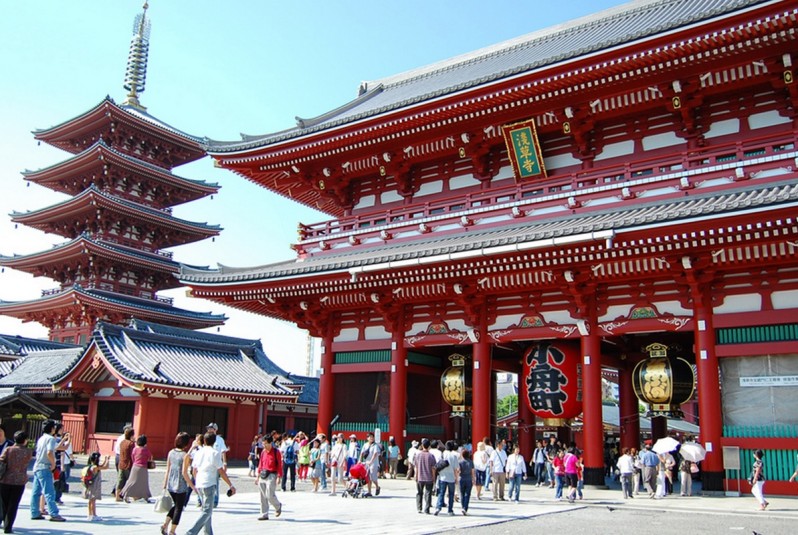
For children and adults, it will be useful to have an unforgettable trip to Tokyo Disneyland – 47 hectares of various attractions, entertainment, and buildings.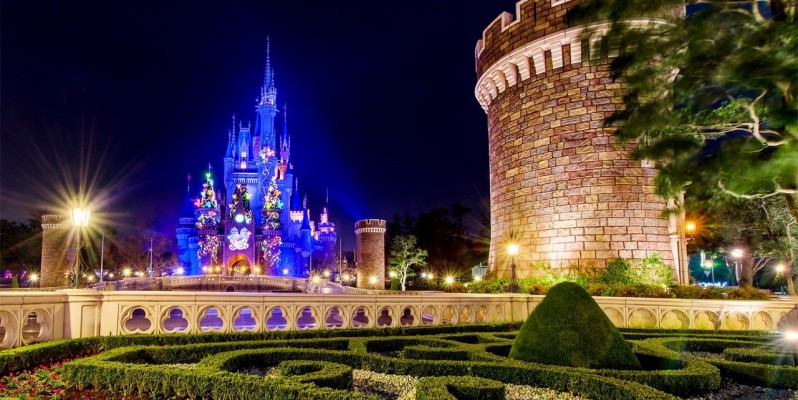
Odaiba Island or Garbage Island
Once an artificial island was built by the Japanese to protect against the enemy and until 1990 was at all city garbage dump. However, what makes hard work of city dwellers and the lack of land here – the futuristic project – a favorite area of Tokyo and tourists. The island of Odaiba is connected to Tokyo by a two-story Rainbow bridge over which a robot train arrives on the island.
The island sparkles with festive lights, and there are several entertainment centers, museums and the headquarters of national corporations, perhaps the most futuristic building is FUJI Corporation.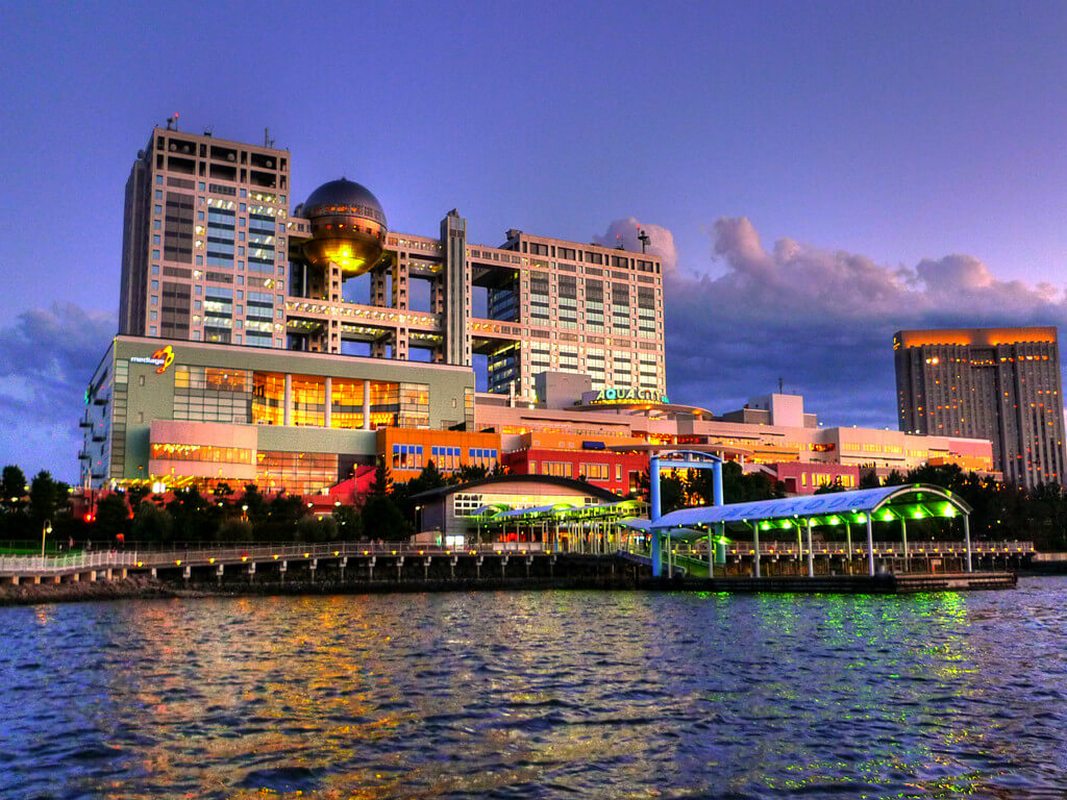
Nikko and the Toshogu shrine
Nikko is a small city-national Park, located in the mountains a hundred kilometers north of Tokyo. Shinto Shrine Tosegu, built here in the 17th century, is a memorial to the famous ruler-commander Tokugawa Ieyasu, who made many endeavors to unite Japan. Here are his grave, the gilded gate of Yomeimon, the main temple, decorated with rich colored carvings. The Park is extremely valuable for its landscape, beautiful monuments and temple buildings.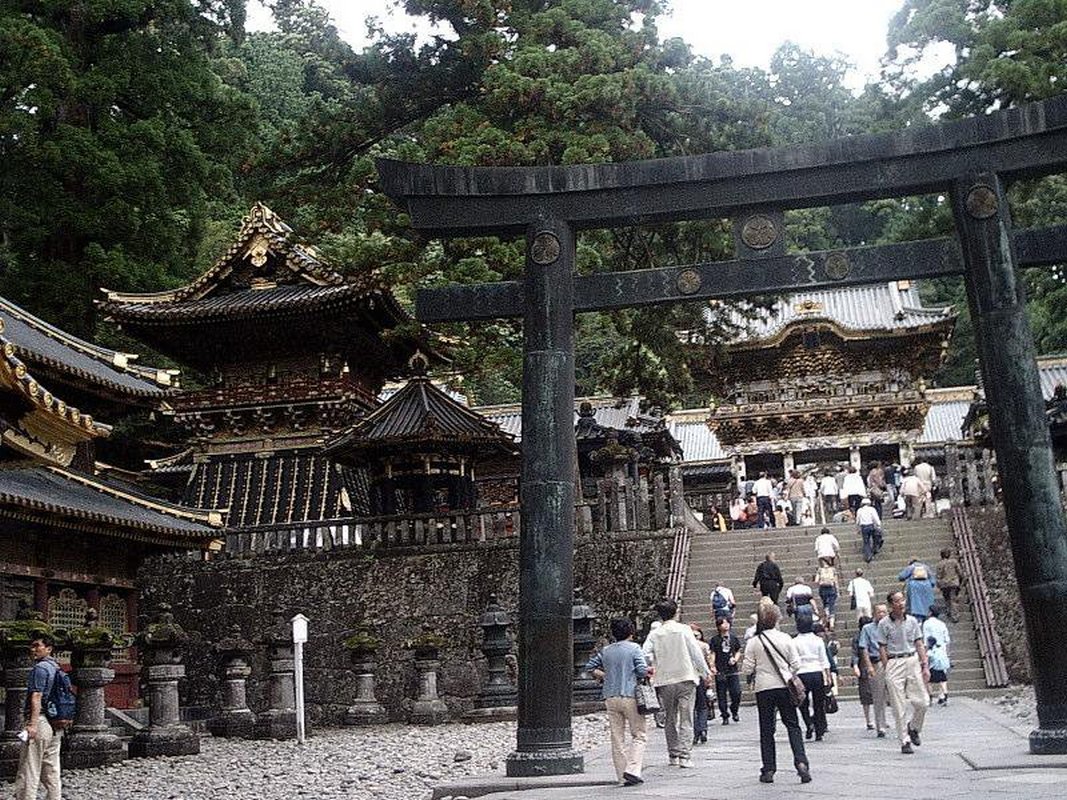
Hiroshima and the Peace Park
The Peace Park was created in memory of the victims of the atomic bomb dropped on the city during the Second World War. On the territory of the Park, there is a memorial ensemble consisting of the Museum of Peace, monuments, ritual bells and mass graves of victims of the nuclear attack.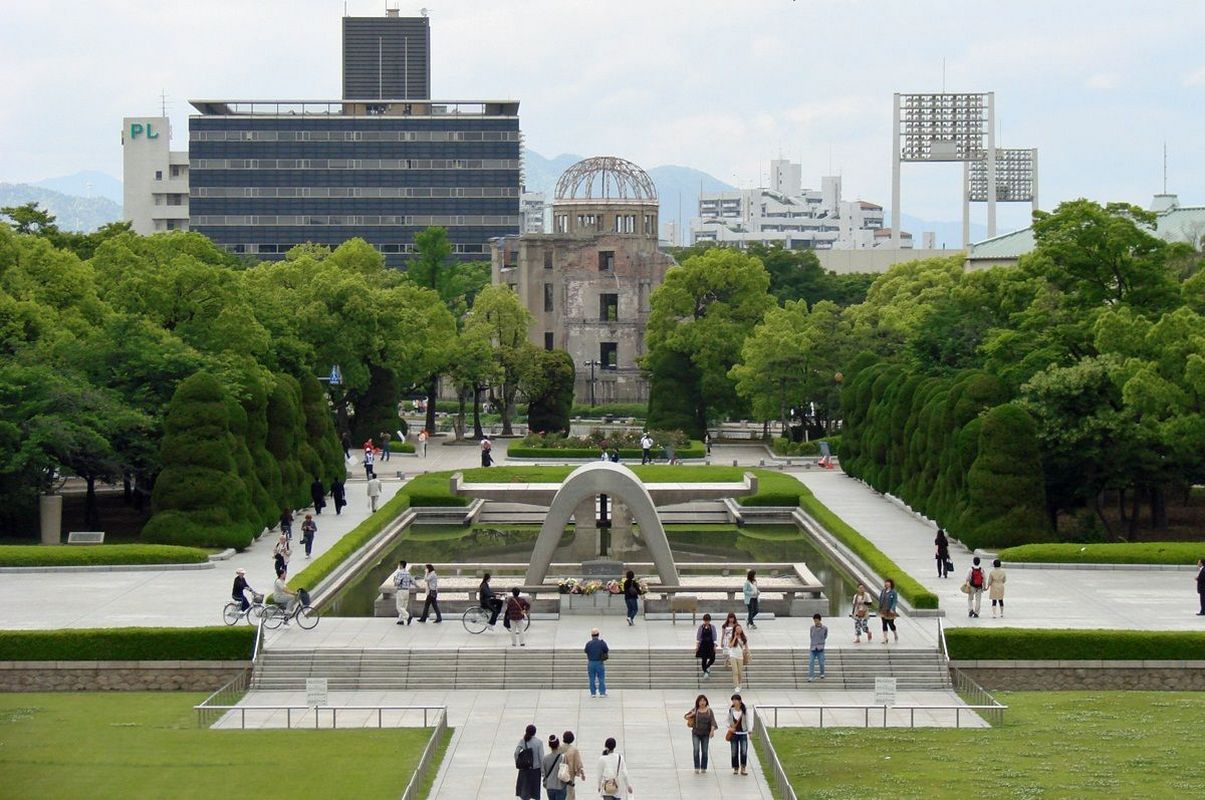
Kyoto. Fushimi-Inari Temple
The most popular place for tourists is the temple of Fushimi-Inari or a Sanctuary of thousands of scarlet gates. There are more than ten thousand Scarlet gates or Thorium, and they attract foreigners most of all. To reach the temple, you need to overcome many long tunnels from such portals.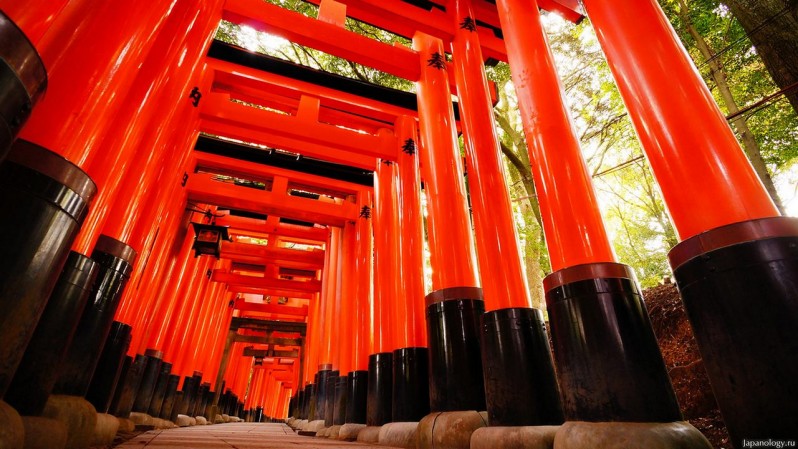
Golden Pavilion
Kinkakuji temple, built in the 14th century, is located in Kyoto. He became famous for the walls of pure gold leaf, which cover the upper two floors of the temple. In the mid-20th century, it was burned by a Japanese fanatic and completely restored a few years later in its original form.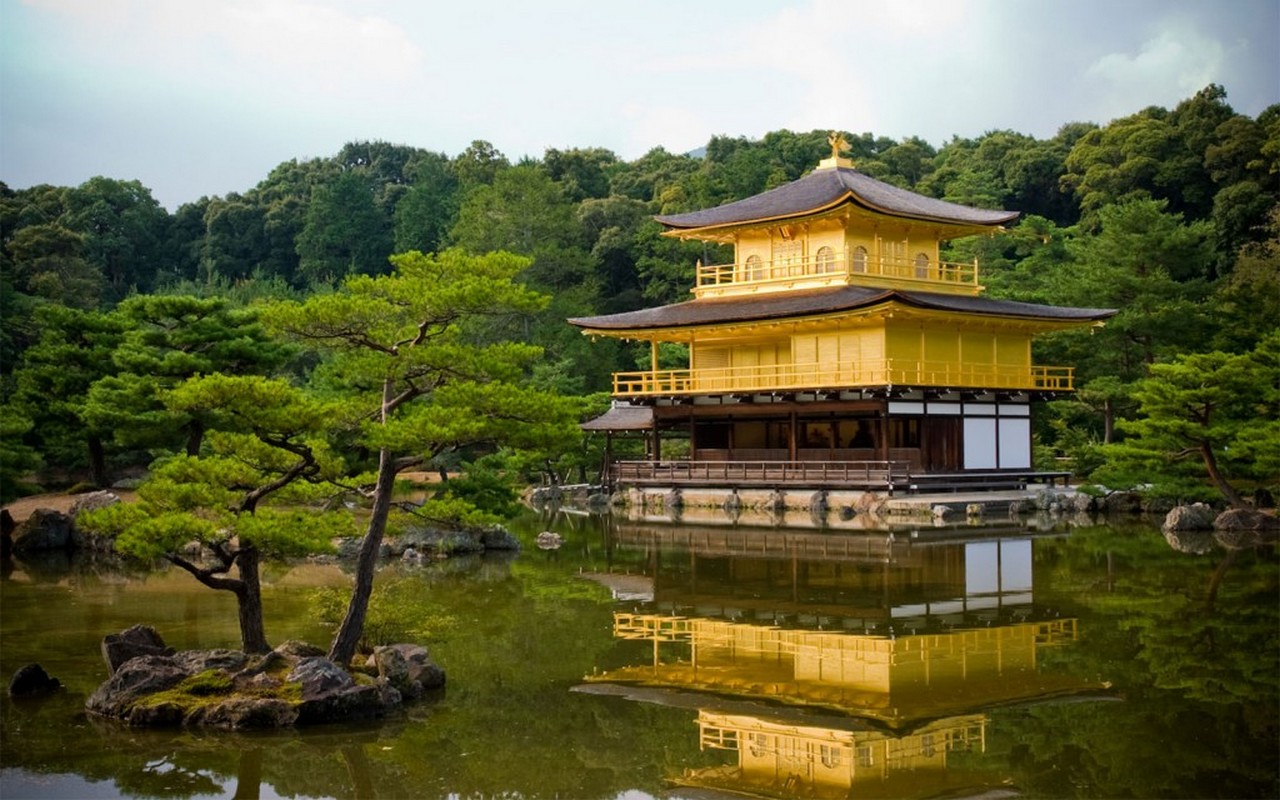
Sagano bamboo forests
Not far from the city of Kyoto is the famous bamboo grove of several thousand bamboo trees, surrounded by temples and mountainous terrain. You can walk on 16 hectares of bamboo forest and note for yourself some beautiful views. Bamboo reaches 40 meters in height, and the speed of its growth is fantastic – the tree trunk can reach 20 meters in height for a month. It is not surprising that in the middle ages this material was used for the construction and manufacture of tools.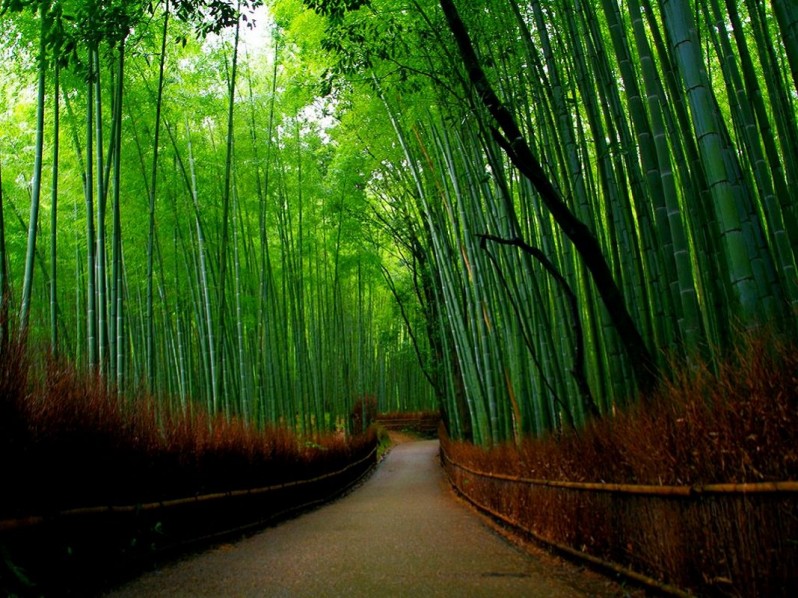
Snow monkeys in hot springs in Nagano
Lovers of fauna will like the snow monkeys playing in the thermal springs. Thanks to the hot springs, in the cold season they come down here from the forest and happy tourists with their tricks. This amazing Jigokudani Park was opened in 1964. It is located at an altitude of 850 meters, and its name owes its name to the thermal springs, which were nicknamed the Valley of Hell. Snow monkeys are an endangered species of animals. In the Park, you can come close to them and even lose valuable items.
Sacred Mount Fuji
Mount Fuji and Volcano Fuji are symbols of the land of the rising sun. This mountain range rises to the sky at 3776 meters, at the peak of which is a volcano. The last eruption of Mount Fuji was in 1708, so it is considered inactive. In confirmation of this is the Shinto Temple, built near the crater and the whole amusement Park FUJI Q, located at the foot of the mountain, the attractions of which are considered extreme. Whether you are interested in attractions or not – stunning views will be guaranteed. There are several hiking trails with stops along the way to the volcano.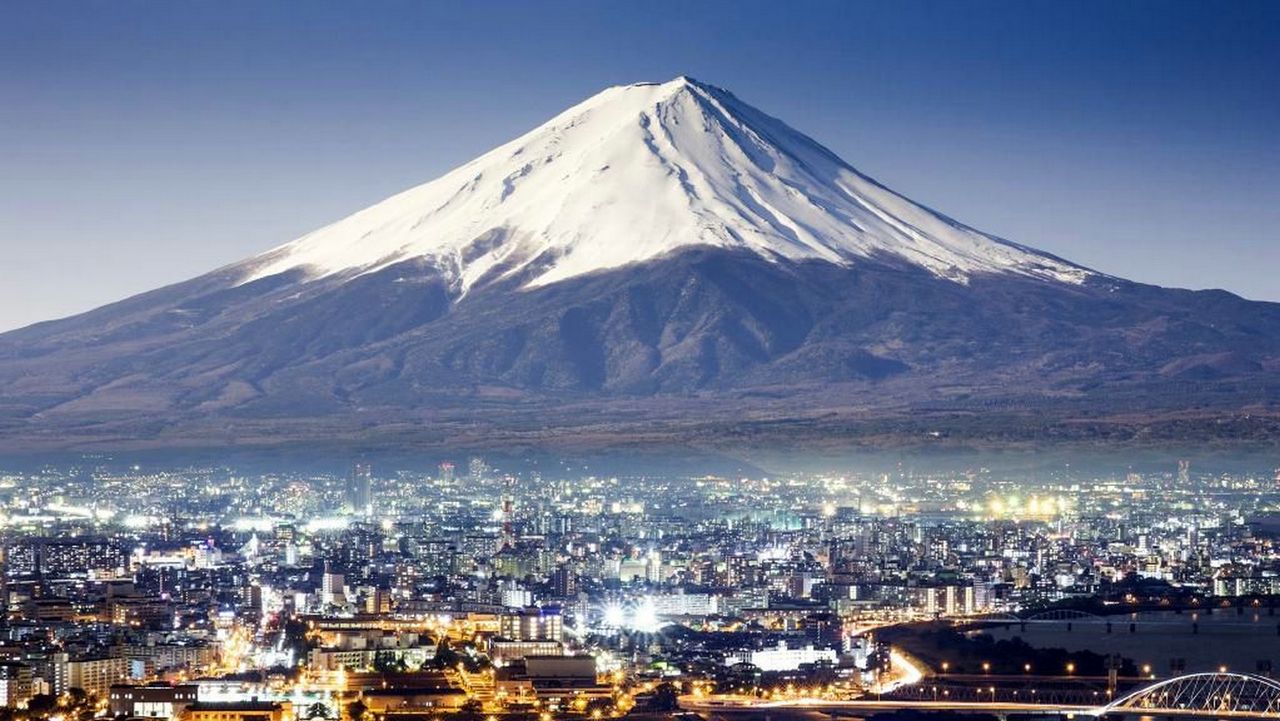
Castle of the White Heron – Himeji
This is a real masterpiece performed by Japanese builderаs and one of the most popular among tourists castle. In the middle ages, the samurai built many forts in Japan and one of them – the Palace of the White Heron or as it is called the Japanese – Himeji. Himeji was exceptional, so and still exist until modern time. The complex of fortifications made of walls, towers, and a moat with water and winding labyrinths made this fortress inaccessible to the enemy, and the elegance of lines and architecture can be admired for hours.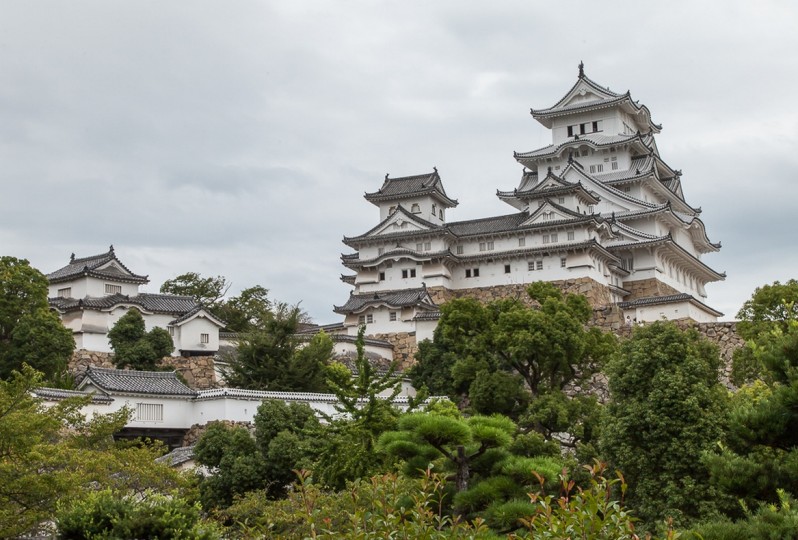
The deer town or city of Nara
To come here is worth, at least, because of more than a thousand deer walking freely through the streets of the city. The city of Nara was the first capital of United Japan during the 6th and 7th centuries. There are many deer on the roads! They have learned that they are loved, fed, and therefore not afraid of anyone. They can be treated to exceptional food, which is sold everywhere here.
Okunoshima Island
Okunoshima Island is a real Paradise for rabbits of different species and color. You can feed them, they can easily be taken in the hands, and there is an incredible amount of them. Forage on the island is not sold, so it is better to stock up in advance.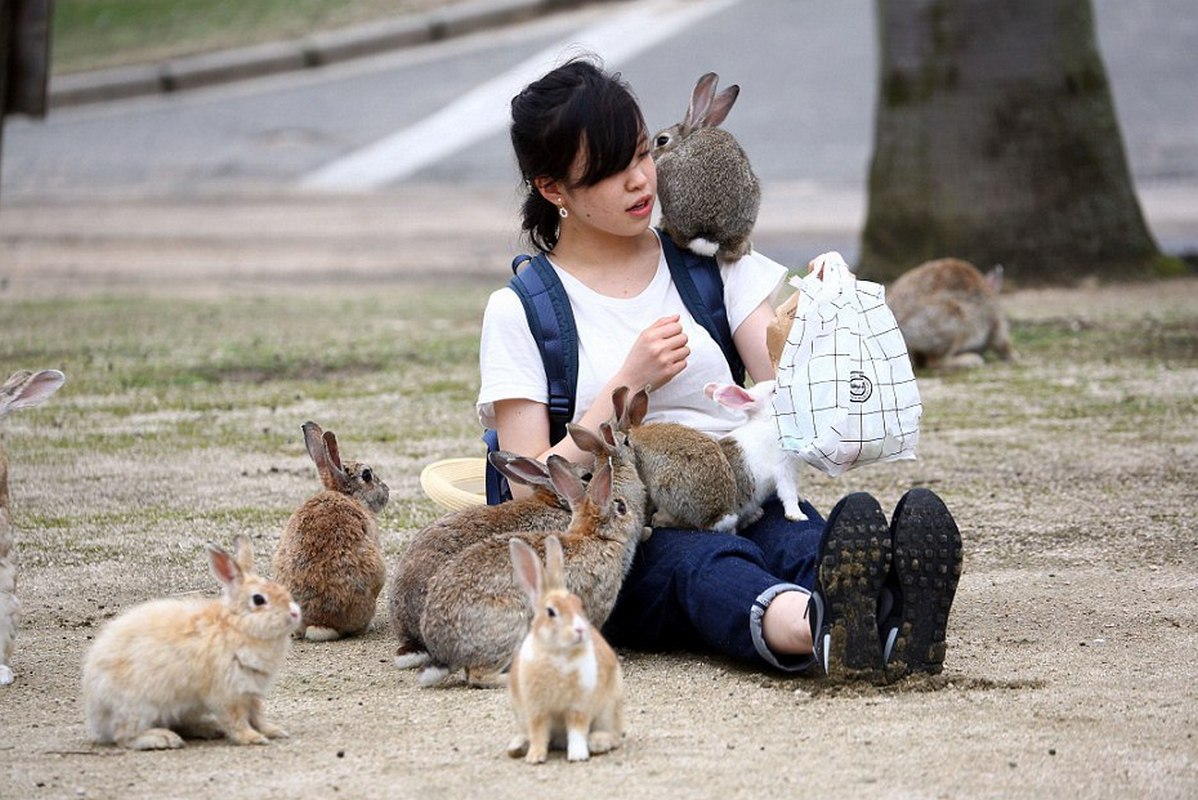
Interesting facts about Japan
Japan is a leader among the countries with the highest expectation of life. In 2015, it was 82.25 years, second only to the satellites - the States of Monaco, Andorra, and San Marino, which cannot correlate with the country of the Rising Sun regarding population.
The name of the land of the Rising Sun the Japanese owe China. This is how the Chinese call their Eastern neighbor.
The women-only carriages are added in the Japanese subway at peak times specifically. It is done no one was being molested to girls and did not feel them – feeling girls in a crowded subway is a widespread phenomenon. At the same time, Japan is the country with the lowest percentage of rapes in the world.
In Japan, there is cheap fish and meat. There is common Japanese wisdom that as long as there is a fish in Japan – no one will die of hunger. In General, it can say that all the food in Japan is quite cheap. Few restaurants serve bread and black tea.
The Japanese are very honest. The issue of samurai honor, Bushido in Japan plays a Central role. The politician considers it his duty to resign for the unfulfilled promise. Although, bikes are stolen regularly here.
An exciting feature of the Japanese is to use Hanko – name stamp instead of the signature. Every Japanese has Hanko, and it can be bought freely.
The Japanese appreciate the environment and the area where they are: on the street do not meet the usual garbage cans, and there are baskets only for plastic and iron cans. The rest of the garbage the Japanese always take with them. For example, after the performance at the stadium or in the theater – all the waste is brought to the home, and it is already utilized.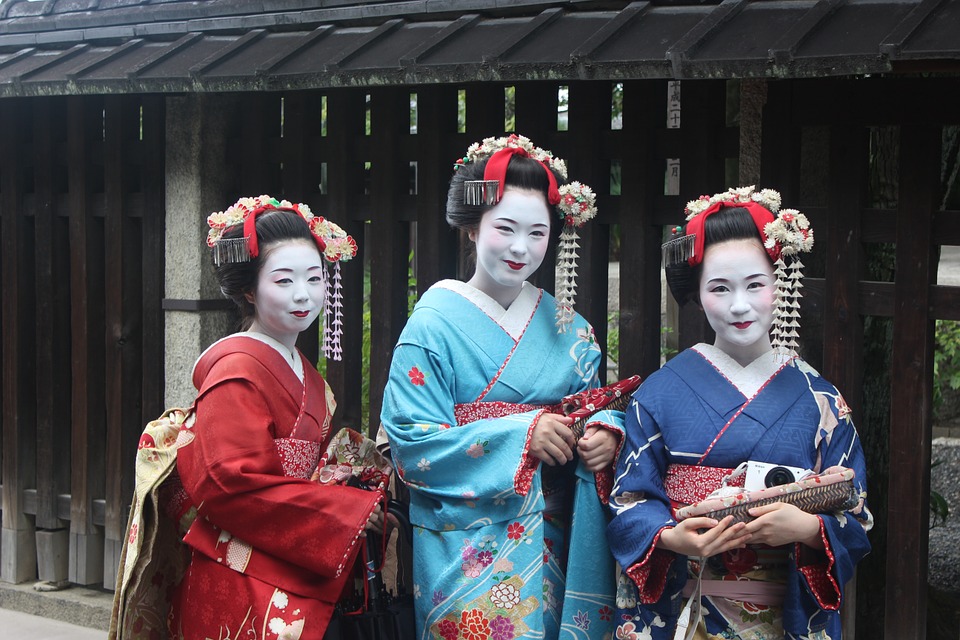
The Japanese are extremely courteous people. From an early age, respect for elders is instilled, and strangers bow to each other if their looks crossed. Nevertheless, unfortunately, most people in Japan do not know English. Therefore, you can bow endlessly, but it will be hard to achieve what you need.
The Japanese sculpt the snowmen by its tradition of the two balls.
A third of weddings in Japan occur only in the result of matchmaking. Parents often act as matchmakers. In Japan, guests at a wedding should buy a ticket for the entrance as to a nightclub.
There is no concept of central heating in Japan. The houses are air-conditioned – if it is desired, it can be to heat or lower the temperature in the room. Moreover, all the roads and sidewalks of the Northern cities of Japan are equipped with heating, which simplifies the process of snow clearing and prevents ice.
The Japanese are considered the most industrious nation on earth. There is even such a term as – Karoshi or death from overwork. It is deemed normal to come to work half an hour before it starts, and work more than the established by salary and stay at work overnight. The Japanese government raises the alarm because of up to ten thousand Japanese dies with this diagnosis every year. Clear labor standards are introduced, and employers are obliged to turn off electricity and the Internet after a certain hour.
In Japan, there is such a phenomenon as Hikikomori, when a person leads a secluded life and does not communicate with society for a long time. Men are the most exposed to this problem, as they are under intense pressure from public opinion and accepted norms, which requires social and professional prosperity. In turn, such people protest the prevailing view.
A salesperson in Japan would be offended if he got a tip. It is believed that the client devalues the service provided to him by overpaying for it.
In restaurants and shops, men are the first to be served, greeted and accepted the order. From food, the Japanese prefer rice and various species meat and fish. So, be patient if you miss European food. Although there is also Italian and Spanish cuisine, it must say, the taste of the dishes will be quite unusual.
Find Football tournament








